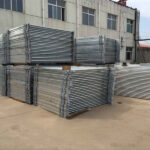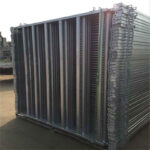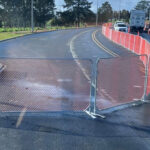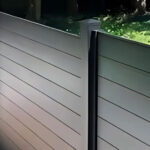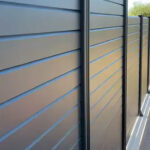Sheep panels are an essential component of livestock management, providing farmers and ranchers with a versatile and effective solution for containing and controlling their flocks. One of the most common questions asked by those in the agricultural industry is, “How tall are sheep panels?” The height of sheep panels can vary depending on several factors, including the specific needs of the flock and the manufacturer’s design. In this comprehensive guide, we’ll explore the various aspects of sheep panel height and its importance in effective livestock management.
Standard Heights for Sheep Panels
When it comes to sheep panels, there isn’t a one-size-fits-all approach to height. However, there are some standard measurements that are commonly used in the industry. Typically, sheep panels range from 34 to 48 inches in height. This range allows for effective containment of most sheep breeds while still being manageable for handlers.
Common Sheep Panel Heights
- 34 inches (86 cm)
- 36 inches (91 cm)
- 40 inches (102 cm)
- 42 inches (107 cm)
- 48 inches (122 cm)
It’s important to note that these heights can vary slightly depending on the manufacturer and the specific model of the panel. For example, Paneles de ovejas australianas en venta may have different standard heights compared to those produced in other countries.
Factors Influencing Sheep Panel Height
Several factors come into play when determining the appropriate height for sheep panels:
- Breed of Sheep: Different sheep breeds have varying jumping abilities and sizes. Larger breeds may require taller panels.
- Objetivo: The intended use of the panels (e.g., permanent fencing, temporary enclosures, or handling systems) can influence the height choice.
- Predator Concerns: In areas with significant predator pressure, taller panels may be necessary to provide additional protection.
- Regulatory Requirements: Some regions may have specific regulations regarding minimum fence heights for livestock containment.
- Terrain: The topography of the land where the panels will be used can affect the necessary height to ensure effective containment.
Importance of Proper Panel Height
Choosing the right height for your sheep panels is crucial for several reasons:
- Effective Containment: Panels that are too short may allow sheep to jump over them, leading to escapes and potential safety hazards.
- Predator Protection: Taller panels can provide better protection against predators that might attempt to enter the enclosure.
- Ease of Handling: Panels that are too tall can make it difficult for handlers to work with the sheep, especially during tasks like shearing or health checks.
- Rentabilidad: Selecting the appropriate height ensures you’re not overspending on unnecessarily tall panels or risking escapes with panels that are too short.
Sheep Panel Height vs. Other Livestock
It’s interesting to compare sheep panel heights with those used for other livestock:
| Tipo de ganado | Typical Panel Height Range |
|---|---|
| Oveja | 34-48 inches (86-122 cm) |
| Ganado | 50-60 inches (127-152 cm) |
| Goats | 40-48 inches (102-122 cm) |
| Horses | 60-72 inches (152-183 cm) |
As you can see, sheep panels are generally shorter than those used for larger livestock like cattle and horses. This is due to the smaller size and lower jumping ability of most sheep breeds.
Customizing Panel Height for Your Needs
While standard heights are available, many fabricantes de vallas offer customization options to meet specific needs. This can be particularly useful if you have:
- Unusually large or agile sheep breeds
- Mixed livestock that requires versatile fencing solutions
- Specific predator concerns in your area
- Unique terrain challenges on your property
When considering custom heights, it’s essential to consult with experienced manufacturers or agricultural experts to ensure you’re making the best choice for your situation.
Installation Considerations for Sheep Panels
When installing sheep panels, height isn’t the only factor to consider. Here are some additional points to keep in mind:
- Ground Clearance: Ensure there’s appropriate space between the bottom of the panel and the ground to prevent sheep from pushing under the fence.
- Panel Overlap: When connecting panels, proper overlap is crucial to maintain the effective height and prevent gaps.
- Slope Adjustments: On sloped terrain, you may need to adjust panel placement to maintain consistent height along the fence line.
- Support Posts: Ensure that support posts are tall enough to accommodate the panel height and provide adequate stability.
- Gates and Access Points: Consider the height of gates and access points to match your panel height for consistent security.
Innovative Designs in Sheep Panel Height
As the agricultural industry evolves, so do the designs of sheep panels. Some innovative approaches to panel height include:
- Adjustable Height Panels: Some manufacturers now offer panels with adjustable heights, allowing farmers to adapt to changing needs or different livestock types.
- Graduated Height Designs: Panels with varying heights along their length can provide enhanced predator protection while maintaining ease of use for handlers.
- Extendable Panels: These designs allow for temporary height increases during lambing season or in areas with heightened predator activity.
Economic Considerations of Panel Height
The height of sheep panels can have economic implications for farmers and ranchers:
- Initial Investment: Taller panels generally cost more, impacting the initial setup costs for fencing systems.
- Long-term Savings: Investing in appropriate height panels can lead to reduced maintenance costs and fewer issues with escaped animals.
- Versatilidad: Choosing panels that can accommodate multiple livestock types may provide better value for mixed farming operations.
“Investing in the right height sheep panels is not just about containment; it’s about creating a safe and efficient environment for both the animals and the handlers.” – Dr. Emily Thompson, Agricultural Economist
Environmental Impact of Sheep Panel Height
The height of sheep panels can also have environmental considerations:
- Wildlife Movement: Lower panels may allow for easier movement of some wildlife species across the landscape.
- Visual Impact: Taller panels can have a more significant visual impact on the landscape, which may be a concern in scenic areas.
- Material Usage: Higher panels require more materials, potentially increasing the environmental footprint of the fencing system.
Technological Advancements in Sheep Panel Design
Recent technological advancements have led to innovative sheep panel designs that address height concerns:
- Smart Fencing Systems: These incorporate sensors and alarms to detect attempted escapes, potentially allowing for the use of lower panels in some situations.
- Materiales ligeros y de alta resistencia: New materials allow for taller panels that remain easy to handle and transport.
- Sistemas modulares: These allow farmers to easily adjust panel heights as needed without replacing entire fencing systems.
Legal and Insurance Considerations
When choosing the height of sheep panels, it’s important to consider legal and insurance implications:
- Some regions have specific regulations regarding minimum fence heights for livestock containment.
- Insurance policies may have requirements for fencing height to ensure coverage in case of livestock-related incidents.
Always check local regulations and consult with your insurance provider when planning your sheep panel installation.
FAQs About Sheep Panel Height
What is the minimum recommended height for sheep panels? The minimum recommended height for sheep panels is typically 34 inches (86 cm), but this can vary depending on the breed of sheep and local regulations.
Can I use cattle panels for sheep instead? While cattle panels can be used for sheep in some situations, they are generally taller than necessary and may be more difficult to work with. Sheep and goat panels for sale are specifically designed for smaller livestock and are often a better choice.
How do I know if my sheep panels are tall enough? Observe your sheep’s behavior. If they’re not attempting to jump over the panels and seem securely contained, the height is likely sufficient. However, if you notice escape attempts, you may need to consider taller panels.
Are there any disadvantages to using panels that are too tall? Yes, panels that are excessively tall can make handling sheep more difficult, increase costs unnecessarily, and may have a greater visual impact on the landscape.
How does panel height affect predator protection? Generally, taller panels provide better protection against predators. However, for comprehensive predator control, additional measures such as electric fencing or guardian animals may be necessary.
Can I increase the height of my existing sheep panels? In many cases, yes. There are extension products available that can be added to existing panels to increase their height. However, it’s important to ensure that the original panels and their supports can handle the additional height and potential stress.
Conclusión
Understanding the appropriate height for sheep panels is crucial for effective livestock management. While standard heights typically range from 34 to 48 inches, the best choice for your farm will depend on various factors including sheep breed, predator concerns, and local regulations. By carefully considering these factors and potentially customizing your panel height, you can create a safe, efficient, and cost-effective containment system for your flock.
As the agricultural industry continues to evolve, we can expect to see further innovations in sheep panel design, potentially offering even more flexible and effective height solutions. Whether you’re setting up a new farm or upgrading existing infrastructure, taking the time to choose the right panel height will pay dividends in improved livestock management and peace of mind.
Remember, while height is a crucial factor, it’s just one aspect of a comprehensive fencing system. Combining appropriate height with quality materials, proper installation, and regular maintenance will ensure that your sheep panels serve you and your flock effectively for years to come.



